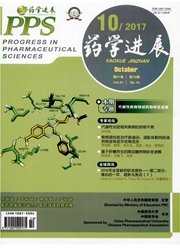

 中文摘要:
中文摘要:
生物体内存在各种内源性活性物质,帮助生物进行信号传递与代谢调控。正常条件下,细胞环境不断变化,内源性小分子的时空分布在生物体内保持动态平衡。但当它们的种类和浓度超过生理过程所需的限定范围时,就会影响细胞活性,进而导致疾病,甚至是肿瘤和癌症的发生。因此,这些活性物质在体内活动的实时追踪及可视化对人们理解生命现象、研究疾病发生机制十分重要。与传统有机染料相比,金属配合物发光(荧光/磷光)探针因光稳定性好、生理功能易调控等优势,已成为生物体系小分子活性物质示踪和成像的研究热点。依照不同的作用靶点,对应用于生物体系的金属配合物探针的最新进展进行分类和总结,并展望金属配合物在生物成像中的未来应用,以期可以为人们继续设计出新的具有良好示踪成像性能金属配合物探针提供参考,并从分子水平理解探针作用及癌症治疗的机制。
 英文摘要:
英文摘要:
There are a variety of endogenous bioactive substances in living organisms that are involved in conducting signals and regulating metabolism. Normally, the intracellular environment continues to change, but dynamic balance is maintained for the space-time distributions of endogenous bioactive small molecules. However, when their species and concentrations are beyond the ranges needed by biological processes, cellular viability will be affected and many diseases may develop, even including tumor and cancer. Thus, tracking and visualizing their activities m organisms are important for understanding living processes and pathogenic mechanisms. Compared with traditional organic dyes, metal complex- based luminescent (fluorescent or phosphorescent) probes are advantageous in photo-stability and easy modulation of physiological function, becoming a research hotspot in the field of tracking and imaging of small biological molecules. In this paper, metal complex-based probes for living systems were classified and summarized according to their targets, and their future applications in bio-imagmg were forecasted. We hope that this review could provide reference for the design and synthesis the novel metal complex-based probes, and improve the understanding of probe action and cancer treatment at molecular level.
 同期刊论文项目
同期刊论文项目
 同项目期刊论文
同项目期刊论文
 期刊信息
期刊信息
